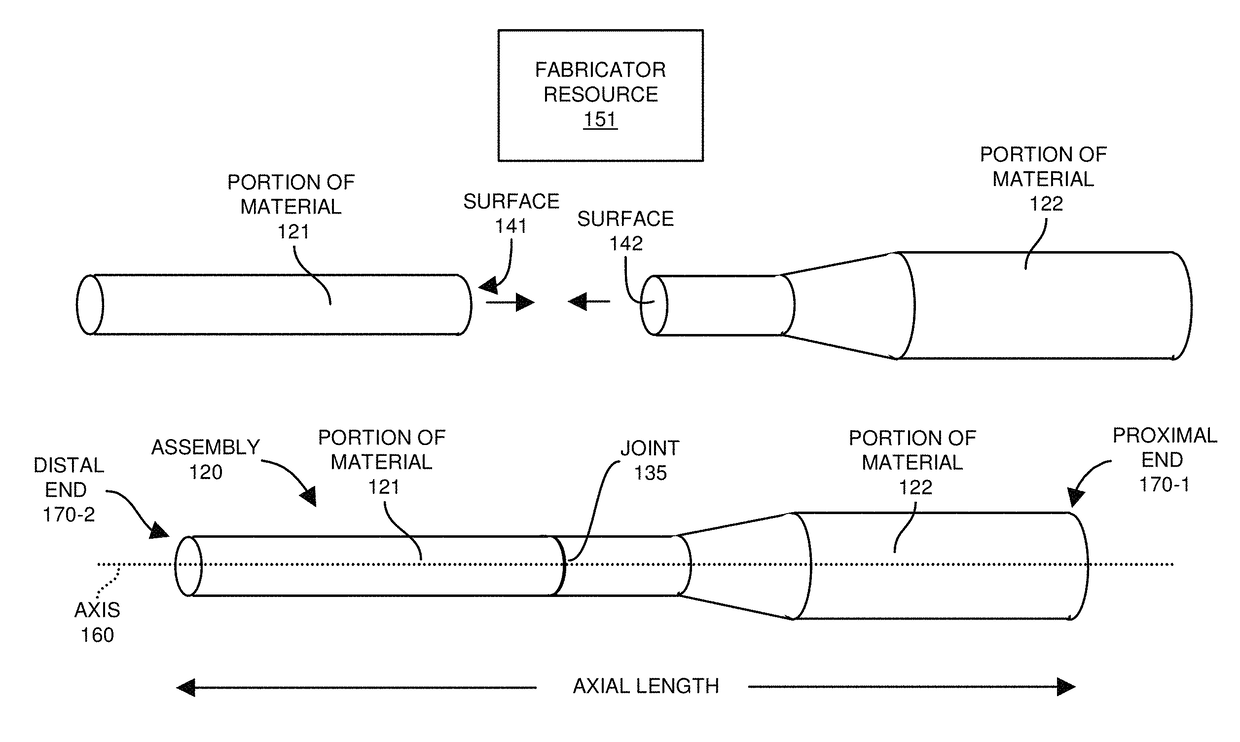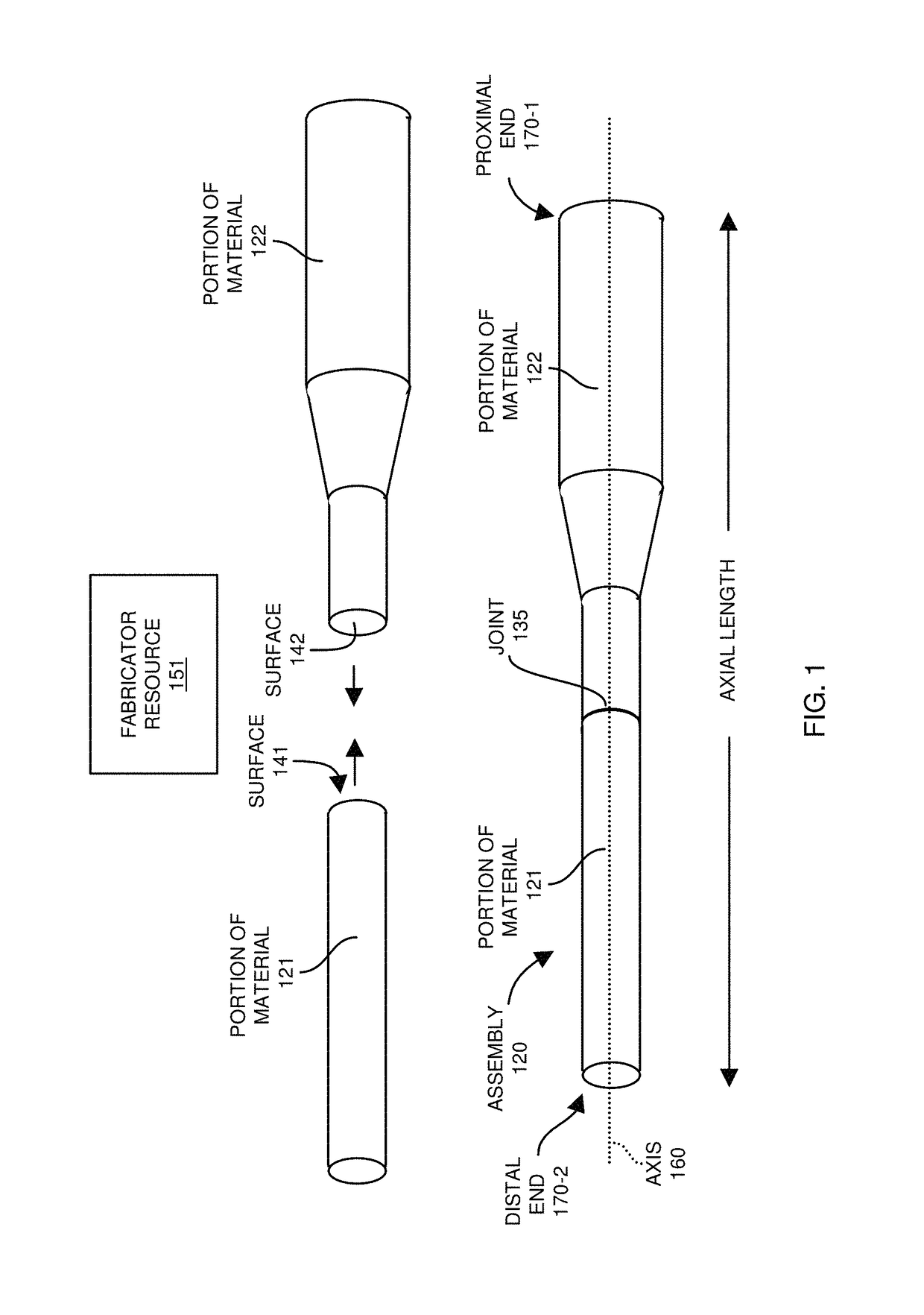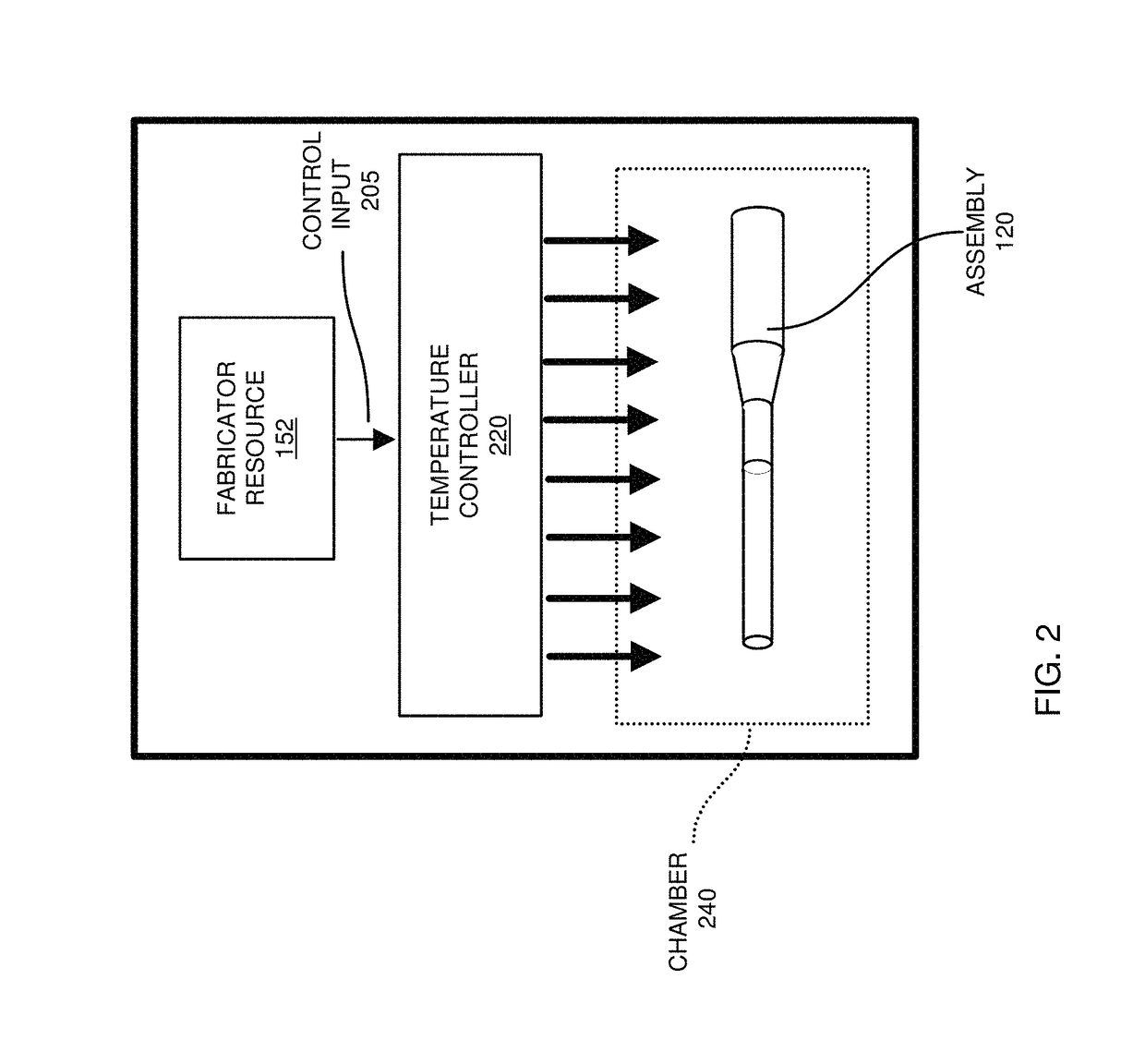Assembly fabrication and modification of elasticity in materials
a technology of elasticity and assembly, which is applied in the direction of instruments, ultrasonic/sonic/infrasonic diagnostics, mechanical vibration separation, etc., can solve the problems of reducing the usefulness of the probe, affecting the accuracy of the probe, and the conventional techniques of producing titanium alloy components or assemblies having precise physical characteristics suffer from deficiencies, so as to achieve the effect of slow cooling of the assembly
- Summary
- Abstract
- Description
- Claims
- Application Information
AI Technical Summary
Benefits of technology
Problems solved by technology
Method used
Image
Examples
Embodiment Construction
[0029]In general, as described herein, a fabricator resource receives an ultrasonic probe assembly including a first portion of material and a second portion of material. Initially, the first portion of material in the assembly may have a different modulus of elasticity than the second portion of material. The fabricator resource exposes the assembly to one or more heating / cooling cycles. Exposure of the assembly and corresponding portions of material to the one or more heating / cooling cycles modifies a modulus of elasticity (such as Young's modulus) of the first portion of material and a modulus of elasticity of the second portion of material to one or more desired target values.
[0030]As described herein, certain embodiments herein include setting the modulus of elasticity of the material in the assembly to a homogenous value. Alternative embodiments herein include setting the modulus of elasticity of the material in the assembly to heterogeneous values such that different portions...
PUM
| Property | Measurement | Unit |
|---|---|---|
| temperatures | aaaaa | aaaaa |
| temperature | aaaaa | aaaaa |
| temperature | aaaaa | aaaaa |
Abstract
Description
Claims
Application Information
 Login to View More
Login to View More - R&D
- Intellectual Property
- Life Sciences
- Materials
- Tech Scout
- Unparalleled Data Quality
- Higher Quality Content
- 60% Fewer Hallucinations
Browse by: Latest US Patents, China's latest patents, Technical Efficacy Thesaurus, Application Domain, Technology Topic, Popular Technical Reports.
© 2025 PatSnap. All rights reserved.Legal|Privacy policy|Modern Slavery Act Transparency Statement|Sitemap|About US| Contact US: help@patsnap.com



